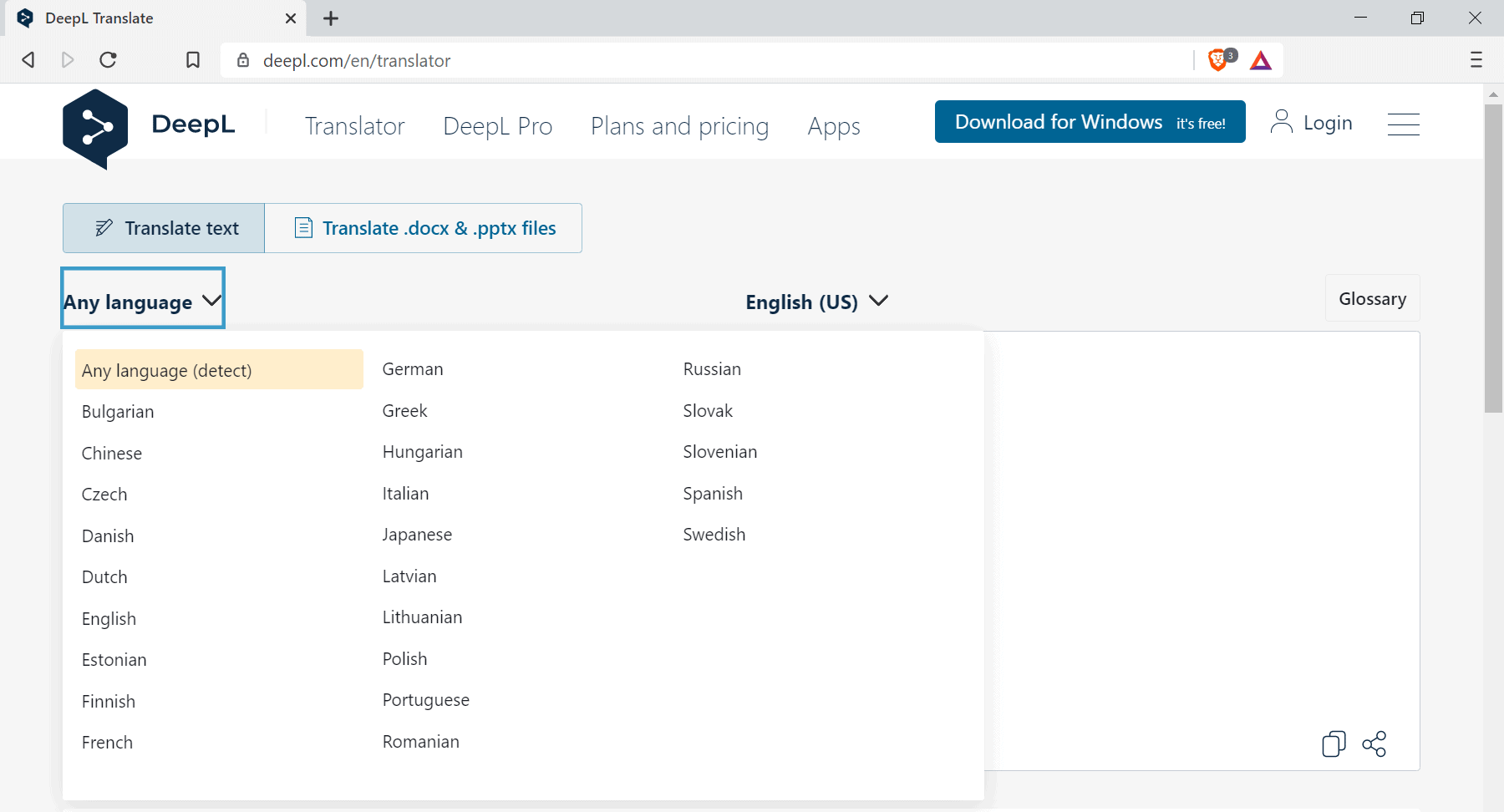DeepL Translator is a popular choice when it comes to the translation of text and documents, as it is considered by many to offer better translations than other machine-based translation services such as Google Translate or Microsoft Translate.
The service promises that its translations are more like the translations of humans, and it announced a breakthrough in AI translation quality last year.
A major shortcoming of DeepL up until now, was that it supported only a small selection of languages. While these covered widely spoken languages such as English, French, Spanish, German or Italian, the selection did pale against the hundreds of languages that other services supported.

DeepL added support for new translation languages over the years. In 2018, it added Russian and Portuguese, and in 2020 support for Chinese and Japanese.
This month, DeepL announced support for 13 additional European languages. The languages in question are Bulgarian, Czech, Danish, Estonian, Finnish, Greek, Hungarian, Latvian, Lithuanian, Romanian, Slovak, Slovenian, and Swedish. It is the largest number of languages that DeepL added to its service, and brings the total to 24 different languages.
While that is still less than the hundreds of languages supported by other services, it ensures that translation quality is high for all languages according to the service.
The move adds translation support for "an estimated 105 million more native speakers around the world" according to DeepL. The company promises that it will add support for more languages in the future.
Widely spoken languages such as Thai, Arabic or Korean are not supported yet, and so are not many other languages.
The new languages are already available on the DeepL website, in the DeepL desktop applications for Windows and Mac, and integrated in the translation API.
Closing Words
DeepL continues to improve its service, and while it is still lacking when it comes to language support, it is continually improving in that department.
I tend to use DeepL whenever possible, as its translations seem more natural than those of other translation services. Major downside is still the low support for languages, but the additional 13 languages surely help get more users interested in the service.
Now You: which translation service do you use, and why?
Thank you for being a Ghacks reader. The post DeepL Translator adds support for 13 European languages appeared first on gHacks Technology News.
0 Commentaires